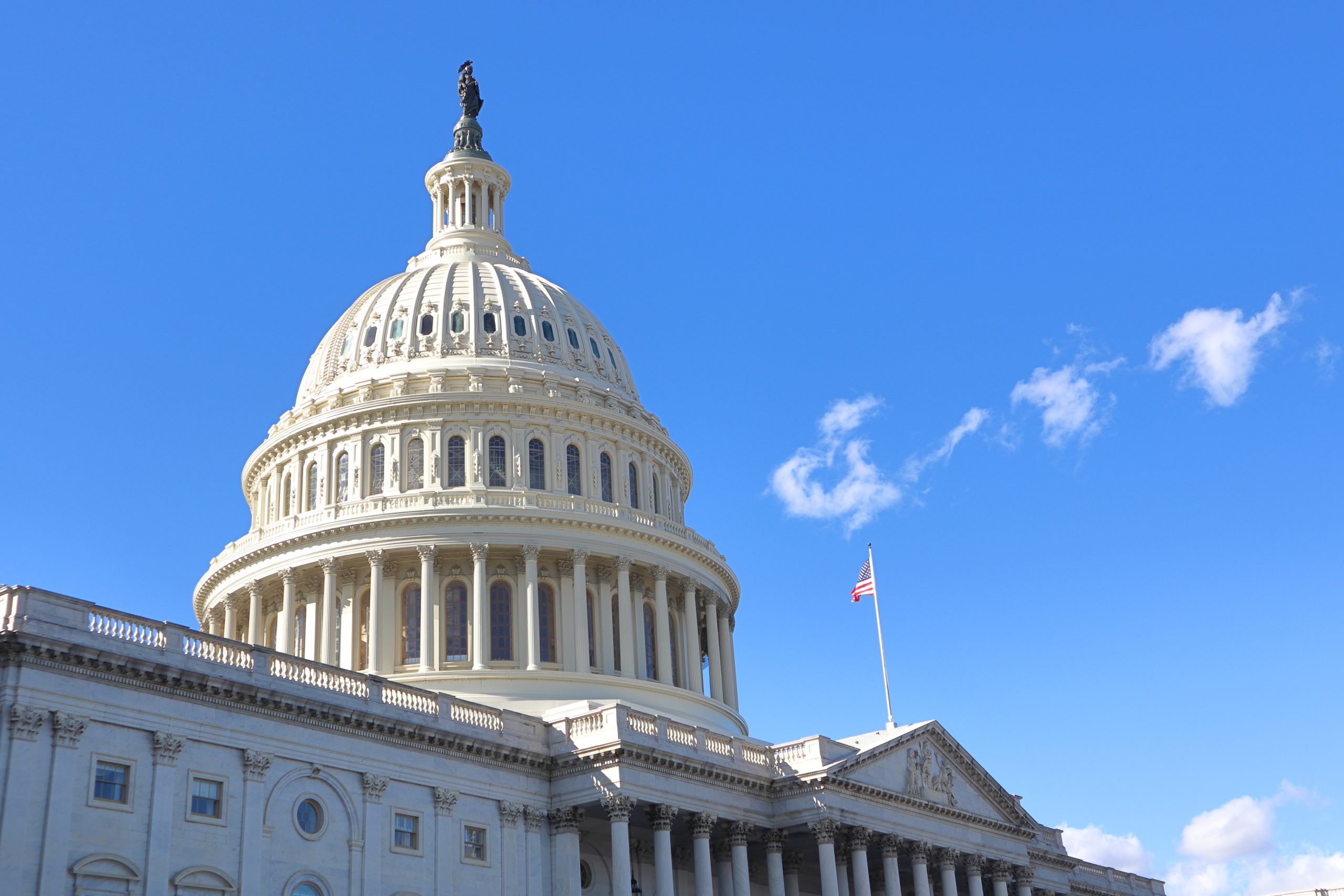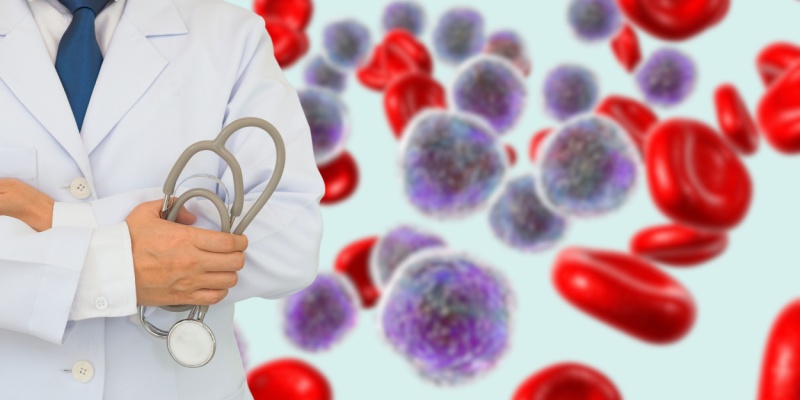
Spotlight on Ayobami Olafimihan, MD
Dr. Olafimihan grew up in Nigeria where he obtained his medical degree at the University of Ilorin. He recently completed his internal medicine residency at John H Stroger, Jr. Hospital of Cook County in Chicago, during which time he led a retrospective interrupted trends study on economic disparities and their relationship to hospital readmissions among patients with acute myeloid leukemia. His research interests include eliminating disparities in healthcare delivery, advancing cancer risk prevention, and exploring implementation science to optimize care models. He is also passionate about sickle cell disease advocacy. He has recently taken on a post as an attending physician.
Among patients with acute myeloid leukemia (AML) who have low incomes, 30-day all-cause readmission rates were higher than among patients with high incomes, signaling a need for new programs that focus on transition of care and postdischarge interventions that address social economic disparities, according to a retrospective study.1
The results were presented by Ayobami Olafimihan, MD, attending physician, John H. Stroger, Jr. Hospital of Cook County in Chicago, Illinois, at the 66th American Society of Hematology Annual Meeting & Exposition.
The Problem
Hematologists/oncologists know that prevention of hospital readmission for patients with AML can lead to improvements in patients’ quality of life and reduction in healthcare costs, according to Dr. Olafimihan. But the literature exploring the correlation between socioeconomic status and hospital readmission among patients with AML is scarce, warranting more research.
“In AML, particularly following chemotherapy treatments, there is bound to be some unplanned readmission, which is necessary. However, there is a subset of the population who have a higher risk of readmission due to their low socioeconomic status,” Dr. Olafimihan told Blood Cancers Today, during an interview. “This is the subset of patients that need to be identified by the healthcare system.”
Healthcare Utilization
In the US AML population, the historic CURRENT study evaluated both older and younger patients who were not candidates for intensive chemotherapy. As one of the most extensive real-world studies of this patient group, it highlighted the significant healthcare resources required for those undergoing low-intensity treatment. Kumar et al2 projected that integrating newer treatment approaches into the AML landscape could reduce overall healthcare utilization.
In 2024, a study looked at oral azacitidine maintenance 4 years after its approval by the FDA.3 Azacitidine was specifically approved for the continued treatment of adult patients with AML who achieved complete remission or complete remission with incomplete blood count recovery after intensive induction chemotherapy and who are not able to complete intensive curative therapy.4 Overall, oral azacitidine maintenance therapy prolonged remission in patients with AML and resulted in lower healthcare utilization costs compared with patients who did not receive maintenance therapy.4
“Hospital admissions are a major financial burden in the United States health system. In 2018, the cost of hospital readmissions was $58 billion, and in just 2 years, this increased by over $5 billion,” said Dr. Olafimihan. “Blood diseases and cancers have the highest rate of readmission, estimated at about 23.9 and 19.0 per 100 index admissions. Notably, AML has also been reported to have an average unplanned readmission rate of about 30% to 60%.”
Economic Burden
Hospital-level, retrospective data published in 2022 highlighted substantial costs among patients with newly diagnosed AML who receive intensive induction chemotherapy.5 The high cost largely resulted from inpatient hospitalization, which lasted for long periods. Moreover, undergoing subsequent hematopoietic stem cell transplantation resulted in even higher costs.
The financial burden of hospital care varies significantly depending on the type of visit, with outpatient services averaging a median cost of $1,083 per visit, ranging from $481 to $2,189, and total outpatient expenses per patient reaching $2,904, spanning $1,054 to $7,217. Inpatient hospitalization presents a steeper financial impact, with a median cost of $34,558 per stay, fluctuating between $25,419 and $49,460; and total inpatient costs per patient soar to $83,440, ranging from $63,067 to $113,985. Intensive care unit (ICU) admissions add another financial layer, with a median per-visit cost of $15,771, falling between $7,209 and $27,564; and total ICU-related costs per patient amounting to $16,550, with a broader range of $7,368 to $36,968.5
A Better Understanding
With information on adult patients with AML from the Nationwide Readmissions Database who were treated in 2010, 2012, 2014, 2016, and 2018, the study investigators determined that subsequent hospitalization of the same patient within 30 days was considered a readmission. Patients with neutropenic fever and those who had elective and traumatic admissions and readmissions were not included in the study population.1
“We classified these admissions and readmissions based on the median household income into the low-income quartile [LIQ] group and the high-income quartile [HIQ] group,” explained Dr. Olafimihan. Patients in the LIQ group had an income below $46,000, and those in the HIQ group had an income above $64,000, according to Olafimihan.
Of the 181,432 index hospitalizations included in the retrospective analysis by Olafimihan and colleagues, 24.1% were from the LIQ group, and 24.6% were from the HIQ group. The patient population had a mean age of 61.6 years. A total of 44,417 hospitalizations among these patients were readmissions within 30 days, with a larger number occurring in the LIQ group (25.0%) than in the HIQ group (23.2%). Of those readmitted, the median age was 59.9 years, and patients in the HIQ group were notably older than those in the LIQ group. Readmitted patients were also predominantly male (53.5%).1
The study revealed a 30-day all-cause readmission rate of 29.7%, which varied year over year, signaling a trend of increasing chances of readmission (P<0.001). The trend was demonstrated between 2010 and 2018, showing that patients in the LIQ group had a higher probability of being readmitted than those in the HIQ group.
Looking specifically at the 30-day neutropenic fever–specific readmission rate, patients with AML in the HIQ group had a 5.1% higher probability of readmission than those in the LIQ group.
Notably, mortality among those readmitted declined from 10.0% in 2010 to 7.8% in 2018, and a trend toward better odds related to inpatient mortality after readmission was observed (P<0.001).
Advancing Strategies to Reduce Readmissions
Overall, the past decade has shown an increasing all-cause 30-day readmission rate among patients with AML. Although the retrospective, real-world data offer more insight for health systems to understand the problem, more data are needed along with solutions.
“This is still a subset that needs to be identified, and when they are identified by the health system, then support should be provided, such as use of evidence-based transition-of-care programs and postdischarge interventions tailored to address their specific social needs to decrease their risk of readmission. So, that would be a good way to curb readmission in this population at risk of readmission due to their socioeconomic status,” explained Dr. Olafimihan.
This study stands as the most comprehensive epidemiologic analysis to date, shedding light on the profound impact of socioeconomic disadvantage on AML readmissions. Olafimihan et al1 emphasize that the LIQ AML population represents a critically vulnerable group, underscoring the urgent need for targeted interventions to bridge gaps in care and improve patient outcomes.
References
1. Olafimihan A, Ntukidem O, Shaka A, et al. Economic disparities in acute myeloid leukemia readmissions in the United States over a decade. Blood. 2024;144(suppl 1):530. doi:10.1182/blood-2024-209065
2. Kumar A, Henzer T, Rodday A, Parson K. Risk factors for length of stay and charge per day differ between older and younger hospitalized patients with AML. Cancer Med. 2018;7(6):2744-2752. doi:10.1002/cam4.1492
3. Borate U, Seiter K, Potluri R, et al. Healthcare utilization and costs among patients with acute myeloid leukemia receiving oral azacitidine maintenance therapy versus no maintenance: a US claims database study. Adv Ther. 2024;41(11):4049-4064. doi: 10.1007/s12325-024-02947-1
4. Jen E, Wang X, Li M, et al. FDA approval summary: oral azacitidine for continued treatment of adults with acute myeloid leukemia unable to complete intensive curative therapy. Clin Cancer Res. 2022;28(14):2989-2993. doi:10.1158/1078-0432.CCR-21-4525
5. Huggar D, Knoth R, Copher R, et al. Economic burden in US patients with newly diagnosed acute myeloid leukemia receiving intensive induction chemotherapy. Future Oncol. 2022;18(32):3609-3621. doi:10.2217/fon-2022-0706






 © 2025 Mashup Media, LLC, a Formedics Property. All Rights Reserved.
© 2025 Mashup Media, LLC, a Formedics Property. All Rights Reserved.